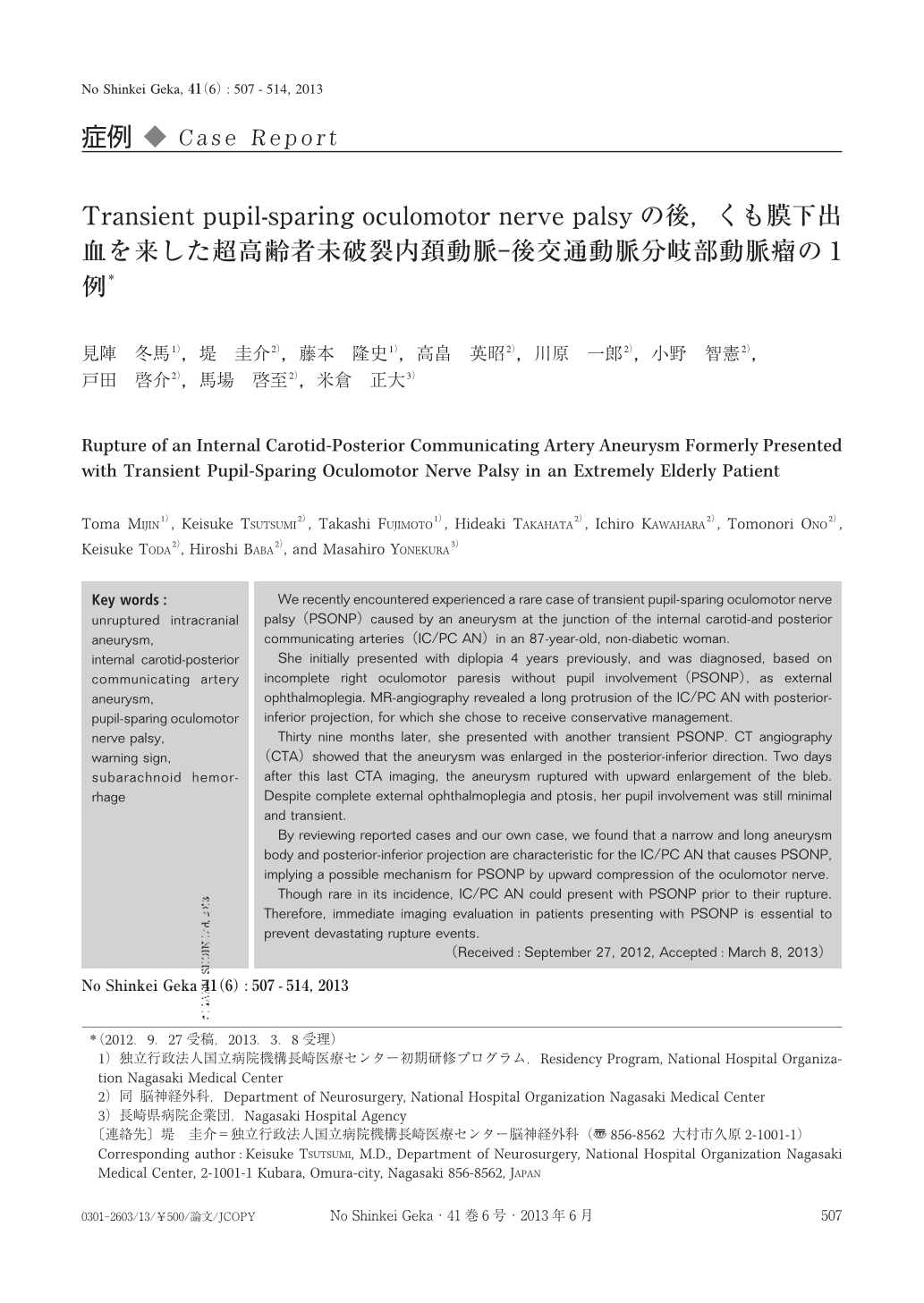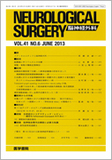Japanese
English
- 有料閲覧
- Abstract 文献概要
- 1ページ目 Look Inside
- 参考文献 Reference
Ⅰ.はじめに
未破裂内頚動脈-後交通動脈分岐部動脈瘤(internal carotid-posterior communicating artery aneurysm:IC/PC AN)の警告症状として,瞳孔異常のない動眼神経麻痺(pupil-sparing oculomotor nerve palsy:PSONP)の存在も知られている11,14).最近われわれは,2回のPSONP後にくも膜下出血(subarachnoid hemorrhage:SAH)を発症した超高齢者未破裂IC/PC ANを経験した.後方視的には非典型的警告症状の可能性が高く,PSONPを伴うIC/PC ANの形態的特徴について文献的考察を加えて報告する.
We recently encountered experienced a rare case of transient pupil-sparing oculomotor nerve palsy(PSONP)caused by an aneurysm at the junction of the internal carotid-and posterior communicating arteries(IC/PC AN)in an 87-year-old, non-diabetic woman.
She initially presented with diplopia 4 years previously, and was diagnosed, based on incomplete right oculomotor paresis without pupil involvement(PSONP),as external ophthalmoplegia. MR-angiography revealed a long protrusion of the IC/PC AN with posterior-inferior projection, for which she chose to receive conservative management.
Thirty nine months later, she presented with another transient PSONP. CT angiography(CTA)showed that the aneurysm was enlarged in the posterior-inferior direction. Two days after this last CTA imaging, the aneurysm ruptured with upward enlargement of the bleb. Despite complete external ophthalmoplegia and ptosis, her pupil involvement was still minimal and transient.
By reviewing reported cases and our own case, we found that a narrow and long aneurysm body and posterior-inferior projection are characteristic for the IC/PC AN that causes PSONP, implying a possible mechanism for PSONP by upward compression of the oculomotor nerve.
Though rare in its incidence, IC/PC AN could present with PSONP prior to their rupture. Therefore, immediate imaging evaluation in patients presenting with PSONP is essential to prevent devastating rupture events.

Copyright © 2013, Igaku-Shoin Ltd. All rights reserved.


